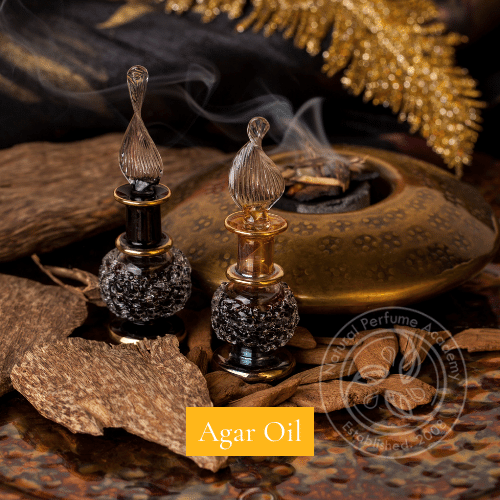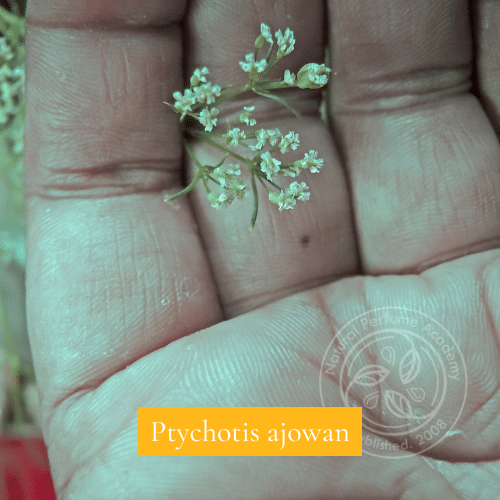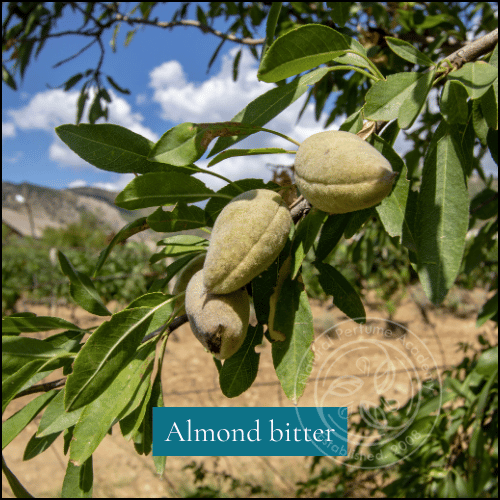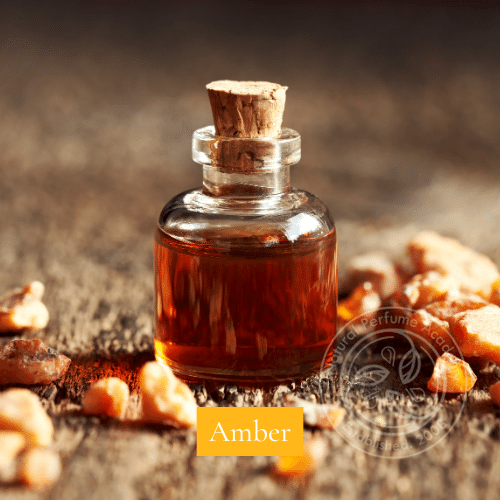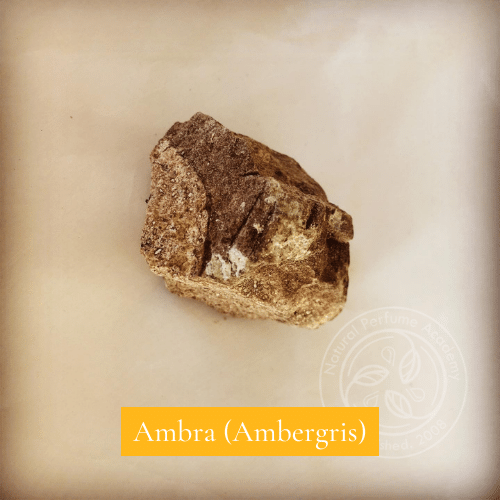Absolute: Botanical Name, Description, and UsesTitle: Absolute: Botanical Name, Description, and Uses What is an Absolute?An absolute is a highly concentrated, entirely alcohol-soluble, and usually liquid perfume material. It is obtained through the alcohol extraction of concretes, hydrocarbon extracts, or fat extracts of plant material. Botanical NameThe botanical name of the plant used to produce the absolute varies depending on the specific plant. Some common examples include: - Jasminum grandiflorum (Jasmine Absolute) - Rosa damascena (Rose Absolute) - Lavandula angustifolia (Lavender Absolute) DescriptionAbsolutes are known for their rich, intense fragrance and are a staple in natural perfumery. They are derived from plants and flowers through a multi-step extraction process that involves creating a concrete first and then extracting the absolute with alcohol. Uses- Perfumery: Absolutes are used as key ingredients in high-end perfumes for their complex and authentic aromas. - Aromatherapy: Due to their concentrated nature, absolutes are used in aromatherapy to provide therapeutic benefits. - Cosmetics: Absolutes are also incorporated into skincare and haircare products for their aromatic properties and potential benefits to the skin and hair. Goes Well WithAbsolutes blend well with a variety of essential oils and other natural extracts. Some popular combinations include: - Jasmine Absolute: Pairs well with sandalwood, ylang-ylang, and citrus oils. - Rose Absolute: Blends beautifully with geranium, lavender, and frankincense. - Lavender Absolute: Complements bergamot, clary sage, and patchouli. The Extraction Process1. Harvesting: The plant material is harvested at peak fragrance times. 2. Solvent Extraction: The plant material is processed to create a concrete using solvents. 3. Alcohol Extraction: The concrete is then treated with alcohol to separate the absolute. 4. Purification: The absolute is purified and filtered to remove any impurities. Why Choose Absolutes?Absolutes are chosen for their unmatched aromatic complexity and strength, making them invaluable in creating luxurious and enduring perfumes. ConclusionAbsolutes are an essential component in the world of natural perfumery, offering intense and multifaceted scents that enhance any fragrance blend. Their versatility and potency make them a favorite among perfumers and aromatherapists alike. |
AccordTitle: AccordDescription: An accord, often referred to in musical terms as a chord, is a combination of two or more essences that create a unique scent with its own character and distinctive fragrance. It represents the harmonization and balance within a blend of essences, achieving a cohesive and unified olfactory experience. Botanical Name: Not applicable, as an accord refers to a blend of multiple essences. Uses: Accords are foundational in perfumery, used to build the complexity and depth of a fragrance. They form the heart of perfumes, ensuring that different notes blend seamlessly and complement each other. Goes Well With: Accords can be tailored to suit various fragrance families, such as floral, oriental, woody, or fresh. They can be blended with single notes or other accords to enhance and elevate the overall scent profile. |
AdulterationTitle: Adulteration Description: Adulteration refers to the practice of intentionally degrading the quality of an essential oil or other perfume material in order to deceive buyers and secure a sale. This often involves the addition of cheaper or synthetic substances that compromise the purity and integrity of the product, contrary to what is indicated on the label. Relevant Context:Adulteration is a significant concern in the perfume and essential oil industry as it can mislead consumers, diminish the effectiveness of the product, and potentially introduce harmful substances. Uses: Understanding and identifying adulteration is crucial for ensuring the quality and authenticity of essential oils and perfume materials. It is important for consumers, perfumers, and suppliers to be vigilant and knowledgeable about the sources and composition of their materials. Common Methods of Adulteration: Examples include dilution with carrier oils, addition of synthetic compounds, and mixing with cheaper essential oils. |
Agar oil
Title:Agar Oil Botanical Name: Aquilaria agallocha Description: Agar oil, also known as oud oil, is extracted through water distillation from the fungus-infected wood of the Aquilaria agallocha tree. This tree is primarily found in northeastern India, but it is also native to China and Vietnam. The oil is highly valued in perfumery for its deep, complex, and long-lasting fragrance. Uses: Agar oil is used in high-end perfumes and traditional incense. It is prized for its rich, woody, and sweet aroma, which adds depth and character to fragrance compositions. Goes Well With: Agar oil blends well with sandalwood, rose, and other precious woods and floral oils, enhancing the overall complexity and richness of the scent. Regions: Northeastern India, China, Vietnam Extraction Method: Water distillation from fungus-infected wood Unique Characteristics: The infection of the wood by fungi creates a resin that gives agar oil its distinctive and highly sought-after fragrance. |
Agleia OdorataTitle: Aglaia Odorata Botanical Name: Aglaia odorata Description: Aglaia odorata is an essential oil distilled from the seeds of the Aglaia tree, which thrives in India, Indonesia, and China. This tree is renowned for its fragrant flowers, which are traditionally used to scent tea. The essential oil derived from Aglaia odorata is cherished for its sweet and floral aroma, making it a unique addition to natural perfumery. Uses: Aglaia odorata essential oil is utilized in perfumery for its delicate, sweet, and floral fragrance. Additionally, the flowers of this tree are commonly used to infuse tea with a pleasant scent. Goes Well With: Aglaia odorata pairs well with other floral oils such as jasmine and rose, as well as citrus oils like bergamot and lemon, creating harmonious and balanced fragrance compositions. Regions:India, Indonesia, China Extraction Method: Distillation from the seeds Unique Characteristics:** The oil's sweet and floral scent, combined with its cultural use in tea, makes it a distinctive and versatile ingredient in both perfumery and culinary applications. |
Ajowan
Title: Ajowan Botanical Name: Ptychotis ajowan (syn. Carum ajowan, Carum copticum) Description: Ajowan oil is steam distilled from the fruits, seeds, and sometimes the entire plant of Ptychotis ajowan. This plant, also known as Carum ajowan or Carum copticum, is native to India and the West Indies. Ajowan oil is recognized for its potent and aromatic properties, commonly used in both perfumery and traditional medicine. Uses: Ajowan oil is primarily used for its strong, spicy aroma in natural perfumery. It is also valued in traditional medicine for its potential digestive and antimicrobial properties. Goes Well With: Ajowan oil blends well with other spicy oils such as clove, cumin, and thyme, as well as citrus oils like lemon and orange to create a balanced and invigorating scent profile. Regions: India, West Indies Extraction Method: Steam distillation from fruits, seeds, and whole plant Unique Characteristics: The oil's distinctive spicy aroma and its historical use in traditional medicine make Ajowan a valuable and multifaceted ingredient in both perfumery and therapeutic applications. |
AlcoholTitle: Alcohol Description: In natural perfumery, alcohol serves as a perfume medium, diluent, solvent, or carrier for a perfume composition. Unlike conventional perfumery, natural perfumers prefer using 190 proof organic grape or grain alcohol, avoiding the use of denatured alcohols that contain chemicals. Uses: Alcohol is primarily used to dissolve and blend essential oils and other aromatic compounds, creating a uniform and stable perfume composition. It helps to carry and disperse the fragrance when applied to the skin. Preferred Types: Organic grape alcohol, Organic grain alcohol Characteristics: High proof (190 proof) alcohol ensures that the aromatic compounds are fully solubilized, providing a clear and consistent perfume solution. The organic nature of the alcohol ensures purity and compatibility with the principles of natural perfumery. Importance in Natural Perfumery: The use of organic alcohol aligns with the ethos of natural perfumery, emphasizing purity, natural ingredients, and the avoidance of synthetic chemicals. This commitment to natural ingredients helps in creating perfumes that are gentle on the skin and environmentally friendly. Goes Well With: Essential oils, absolutes, resins, and other natural aromatic compounds Note: Alcohol in natural perfumery is free from denaturing agents and synthetic additives, ensuring a pure and natural carrier for exquisite and authentic fragrances. |
Almond bitter unrectified
Title: Almond Bitter Unrectified Botanical Name: Prunus amygdalus var. amara Description: Almond Bitter Unrectified oil is derived from the kernels of the bitter almond tree (Prunus amygdalus var. amara). This essential oil contains amygdalin, which can release toxic hydrocyanic acid. Due to its toxicity, it is used with caution and typically at very low concentrations in perfumery. Uses in Perfumery: Historically noted for its potent and distinctive aroma, bitter almond unrectified oil is used sparingly in natural perfumery to add a unique scent profile. Its use is highly regulated due to its toxic components. Concentration: Typically used at concentrations no higher than 3.0000% in perfume formulations. Regulations: The use of bitter almond unrectified oil is subject to stringent safety regulations. In many regions, its use is restricted or prohibited due to the presence of hydrocyanic acid. It is essential to adhere to these regulations to ensure safety and compliance. Safety Note: This oil is toxic and should be handled with extreme care. It is not recommended for use in products that come into direct contact with the skin. Proper knowledge of handling and formulation is necessary to ensure safe usage. Importance in Natural Perfumery: While not commonly used due to its toxicity, almond bitter unrectified oil remains noteworthy for its historical and aromatic significance in natural perfumery. Modern perfumers often seek safer alternatives that replicate its unique scent profile without the associated risks. Goes Well With: Due to its toxicity, this oil is rarely blended with others in contemporary natural perfumery. Safer, non-toxic alternatives are preferred for creating similar aromatic notes. |
Amber
Title: Amber Description: In natural perfumery, the term "Amber" refers to a warm, powdery note in a perfume composition. Unlike what some might assume, amber in perfumery is not derived from fossilized tree resin. Instead, this evocative scent is typically created through the blending of various aromatic oils such as benzoin, labdanum, and vanilla. These ingredients combine to produce a rich, sweet, and resinous aroma that is highly prized in perfumery. Components: The amber note is usually obtained by combining: - Benzoin: Provides a sweet, vanilla-like scent with balsamic undertones. - Labdanum:Offers a deep, resinous, and slightly leathery aroma. - Vanilla:Adds a creamy, sweet note that enhances the overall warmth of the blend. Uses in Perfumery: Amber is a versatile and popular note used to add depth, warmth, and complexity to a wide range of fragrances. It is especially prominent in oriental, gourmand, and woody compositions. Common Misconception: It is a common misconception that amber used in perfumery is derived from amber fossilized resin. In reality, the fossilized resin, often referred to as amber, is not used in perfumery due to its lack of fragrance. The aromatic amber note in perfumes is a crafted blend of natural resins and essential oils. Importance in Natural Perfumery: Amber is a cornerstone note in natural perfumery, valued for its ability to harmonize and enhance other elements in a composition. It brings a sense of warmth, sophistication, and longevity to fragrances. Goes Well With: Amber blends well with a variety of other notes, including: - Woody Notes: Such as sandalwood and cedarwood. - Spices: Like cinnamon and clove. - Florals: Such as rose and jasmine. - Resins: Including frankincense and myrrh. Safety Note: Natural components used to create the amber note are generally safe for use in perfumery. However, always ensure proper dilution and conduct a patch test to avoid potential skin sensitivities. Conclusion: The amber note in natural perfumery is an artful combination of natural ingredients, creating a warm and inviting scent. Understanding the true nature of amber in perfumery helps to appreciate its role and versatility in fragrance compositions. |
Ambra
Title: Ambra (Ambergris) Description: Ambra, also known as Ambergris, is a highly prized and mysterious substance in the world of perfumery. It is excreted from the stomach of the cachalot whale, commonly known as the sperm whale. Ambra is the result of a fascinating and unique process within the whale's digestive system. When a sperm whale ingests squid beaks, a common part of its diet, it can sometimes cause irritation to the stomach walls, leading to the formation of a waxy substance known as ambergris. Formation Process: Ambergris is formed through a complex process of chemical reactions within the whale's digestive tract. Over time, this substance undergoes aging and weathering in the ocean, resulting in its distinctive scent and texture. Aromatic Properties: Ambergris possesses a unique scent that is often described as complex, earthy, and musky, with subtle marine undertones. It is highly valued in perfumery for its ability to enhance and fix fragrances, imparting depth, longevity, and a captivating allure to perfumes. Historical Significance: Throughout history, ambergris has been treasured as a rare and precious ingredient in perfumery. It has been used for centuries in luxury fragrances, prized for its exceptional scent-masking properties and its ability to amplify other fragrance notes. Modern Usage: While ambergris was traditionally sourced from the wild, its use in perfumery has become increasingly regulated due to conservation concerns and ethical considerations surrounding the harvesting of whale products. As a result, synthetic alternatives are often used in modern perfumery to replicate the scent of ambergris. Legal Status: The trade and use of natural ambergris are subject to strict regulations and laws in many countries due to its association with endangered species. As a result, perfumers must adhere to ethical and legal guidelines when sourcing and using ambergris in their formulations. Symbolism and Prestige: Ambergris has long been associated with luxury, opulence, and prestige in the world of perfumery. Its rarity, unique scent, and storied history contribute to its enduring allure and fascination among fragrance enthusiasts. Conclusion: Ambra, or ambergris, remains a captivating and enigmatic ingredient in the realm of perfumery, symbolizing the intersection of nature, art, and luxury. While its traditional use may be limited, its legacy continues to inspire and intrigue perfumers and fragrance connoisseurs alike. |
